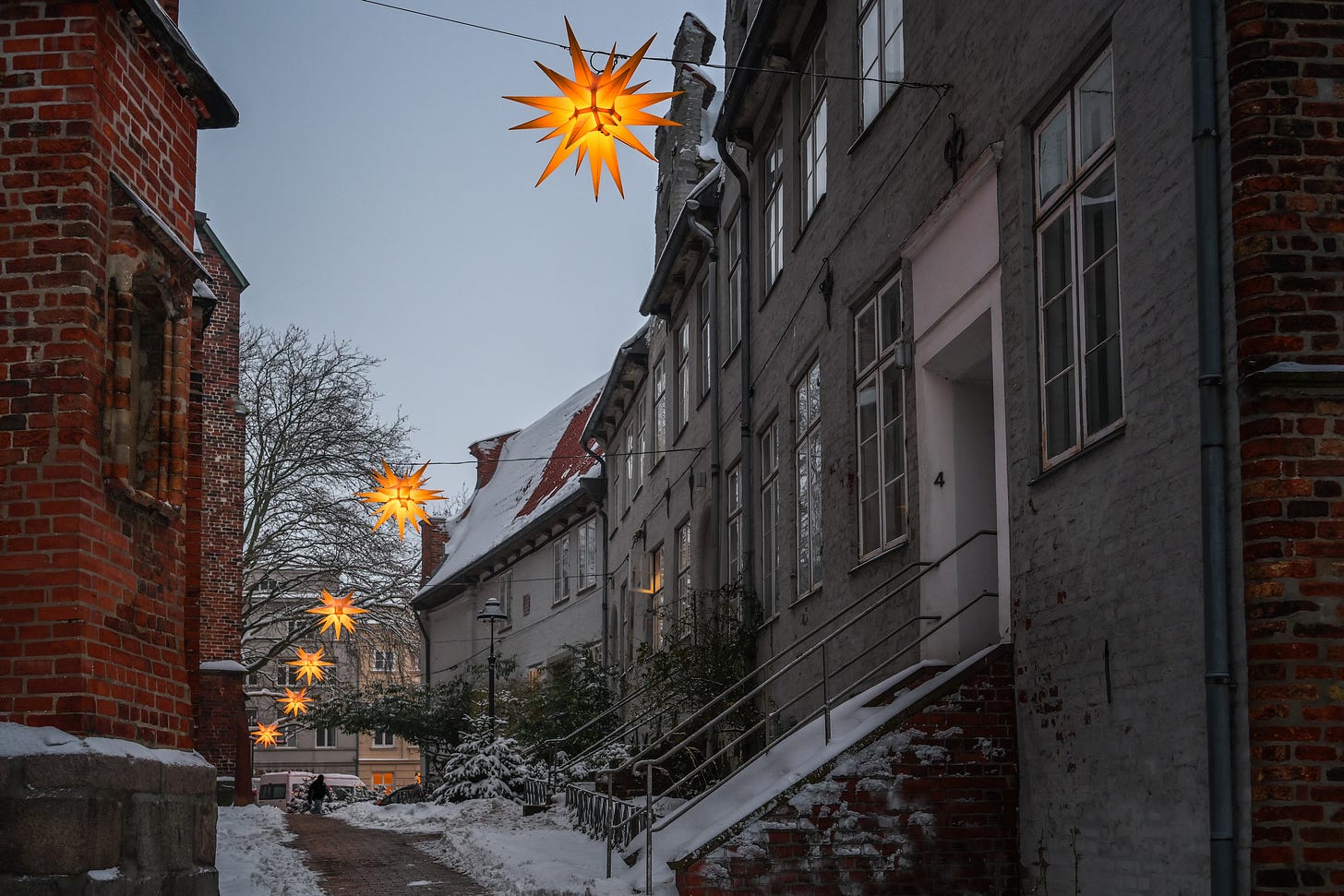Weekend Reads v. 20.12.2024
A thrill of hope.

Have you ever noticed how many Christmas songs are sad? The thought didn’t really occur to me until I read this essay about how some of the best Christmas songs are sad. (Dreadful covers of classic songs deserve their own level of sad)
There is a song about a devastating hunger crisis that always makes the rounds this time of year. Another song that though upbeat, reflects on the heartbreak that took place between this Christmas and last Christmas. And there’s the song that first appeared on the album Blue. It probably wasn’t intended to be played on repeat at Christmas, but gosh does it perfectly articulate the holiday blues.
Christmastime, much like New Year’s Day or a birthday, serves as a natural reflection point, so I suppose it’s no wonder songs about this season can run a bit melancholy. The constant rushing about and long lists of to-dos can bring a hollowness to the light and cheer of the season. Not to mention the season serving as an annual marker which points out heartbreaking things like aging and the absence of loved ones.
But there is an anecdote to these gloomy, melancholy songs — the Christmas carol, cleverly packed full profound theology amidst bells and simple rhymes.
This morning, I was in such a grinchy funk. I suppose this was due in large part to the fact that my brother had to say farewell to his beloved dog. All the while, I’m buried in tasks, exhausted, and frankly having trouble summoning up any festive cheer to propel me through the end of the year. I searched for “classic Christmas” in my Sonos app, and sent the first result to our speakers.
The album turned out to be a collection of Christmas carols sung by a group of men and women in bouffant hair and oversized collars. The line between sacred and 1970’s cheesy was so faint that I was tempted to skip, but being in the Grinchiest of moods made me too lazy to find another album. As that groovy choir sang the words to my favorite Christmas song, “O Holy Night,” I could feel myself refocusing.
“A thrill of hope, the weary world rejoices. For yonder breaks, a new and glorious, morn. Fall on your knees, O hear the angels’ voices. O night divine, O night when Christ was born.”
So what if a present wasn’t mailed in time (sorry, Bill). And who cares if I’ve entered the period known as Lazy Wrapping after months of tape and paper and ribbon? The remaining Christmas cards will just have to get hummingbird stamps because I just cannot bear the thought of standing in line at the post office again for stamps with snowflakes on them.
Weary after a hard year, and weary thinking about the hardship sure to come in the New Year, I choose to take these small remaining hours leading up to Christmas and spend them enjoying that thrill of hope.
***
Take your dessert for Christmas dinner to the next level with edible glitter.
Speaking of parties, this one is for the introverts out there. “How to get your party guests to leave.”
Kinda want to make this cocktail over the holidays. It’s a festive twist on a classic drink.
Would love to have been in the room with a group of people at Yale decided to study the connection between friendship and gut microbes. (Spoiler alert: there’s a connection between the two)
Typewriters are back. At least in Berkeley, CA.
This essay about the evolutionary roots of paranoia was interesting to me.
“Why are propensities towards paranoia so widespread? And why is paranoia associated with such a wide range of psychological disorders, disturbances, and difficulties?
More fundamentally, why is paranoia such a common failure mode of human cognition?
The short answer, I think, is this: Other people constitute the most dangerous and complex threat humans confront, and the cognitive processes and strategies we have evolved to manage this threat are unavoidably fragile.
Here is the long answer.
Humans are intensely social (in fact, ultra-social) animals. Most of our most important goals are social (e.g., relationships, community, approval, status, etc.), and even our ability to achieve non-social outcomes (e.g., food, shelter, warmth, etc.) depends and has always depended on extensive social support and cooperation.
This intense sociality has a nice side. However, because we are products of evolution by natural selection, it also has a dark side. Social competition and conflicts of interest are baked into human social life.
Put simply, other people and the relationships, community, and status they provide are not just the fundamental source of meaning and purpose in human existence. They are also the greatest threat we must navigate.” (Source)
A Zoomer breaks down they way to find friends, fake it ‘til you make it, and like life.
5 surprising facts about real estate in France.
Can you believe these home décor items are available on Amazon? Some of them are seriously luxe.
Kathy, we should probably consider getting a pet piano for the cats in our lives. CC: Brigette who should buy this for Cooper.
How to start a great conversation.
Take it easy this weekend!


